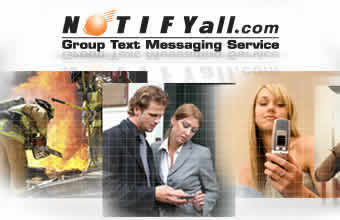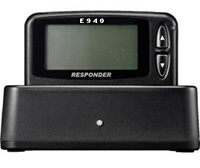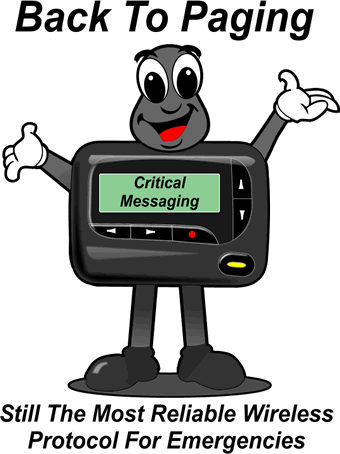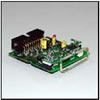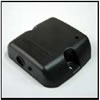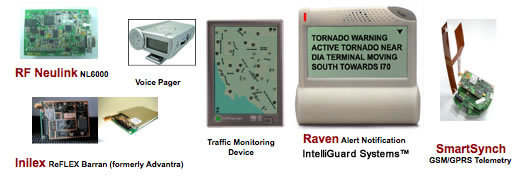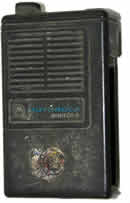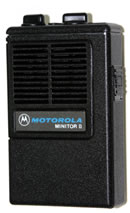BloostonLaw Telecom Update Published by the Law Offices of Blooston, Mordkofsky, Dickens, Duffy & Prendergast, LLP [Portions reproduced here with the firm's permission.] www.bloostonlaw.com |
| Vol. 13, No. 44 | November 10, 2010 |
 Tower Compliance Manual BloostonLaw has assembled a compliance manual for all tower/antenna structure owners, as well as any licensee mounting antennas on structures. The manual helps structure owners and licensees avoid FCC fines, minimize Federal and state approval delays, and minimize or avoid the potential for civil and/or criminal liability that could be associated with tower operations/accidents. The manual includes a detailed explanation of FCC, FAA and other Federal regulatory requirements so that your staff can understand the legal do’s and don’ts associated with tower construction and antenna mounting. We have also developed checklists that can be used by your employees and contractors to (1) make sure that necessary compliance steps are taken and (2) create a paper trail documenting such compliance. There are separate checklists for antenna structure owners and radio licensees that will use such structures. These checklists cover such issues as environmental protection, historic preservation, harmful RF radiation limits, interference protection, aviation safety, and Federal reporting requirements. A sample tower log is included. In recent years, tower owners have faced million dollar fines and even higher civil liabilities due to rule violations that may contribute to an aviation accident. Similar liability can arise from environmental or harmful radiation violations. Also, many licensees do not realize that, for every antenna mounted in the United States, the licensee must either obtain the prior approval of the applicable State Historic Preservation Officer (SHPO), or establish that the antenna qualifies for an exemption from this requirement. BloostonLaw is offering its antenna structure compliance manual in binder format, with the checklists provided on CD-ROM as well, so that you can print off the appropriate checklist for each new structure or antenna. Please contact the firm for a copy of the manual. BloostonLaw contacts: Hal Mordkofsky, 202-828-5520; and John Prendergast, 202-828-5540. |
 INSIDE THIS ISSUE - Joint Board recommends Lifeline, Link-Up rules.
- RTG has concerns about CTIA’s Revised Transition Plan for cellular licensing.
- Bluegrass Cellular inks deal for Verizon Wireless 4G LTE.
- FCC unveils tentative agenda for November 30 open meeting.
- NTIA releases report on broadband Internet adoption.
|
Joint Board Recommends Lifeline, Link-Up Rules Most Members Issue Concurring, Dissenting Statements on Recommended Decision With most members partially concurring or dissenting, the Federal-State Joint Board on Universal Service last week issued its Recommended Decision (RD) on the eligibility, verification, and outreach rules for the Lifeline and Link-Up universal service programs. Arguably (as seen below) the separate statements of the Joint Board members will illustrate that the RD is far from a consensus position from either the federal or state viewpoint. Nonetheless, the RD raises significant issues for the rural telecom industry. Whereas rural telephone entities have been traditionally reluctant to question or limit federal Lifeline and Link-Up support, these programs have grown rapidly from $800 million in 2005 to $1.4 billion this year, and are projected to surpass $2 billion within the next two years for voice services alone. Major additional funding requirements will be needed to transition Lifeline and Link-Up from voice programs to programs that will not only enable low income customers to purchase broadband services but also increase broadband take rates. Hence, the proceeding begun by the Commission’s referral of Lifeline and Link-Up to the Federal-State Joint Board on Universal Service raises serious concerns as to the source of the dollars to fund these programs, particularly when the Commission continues to insist that the overall Universal Service Fund (USF) remain at its current $8.7 billion size (in 2010 dollars). Rural telephone company interests are not unreasonably concerned that the continued burgeoning growth of the Lifeline and Link-Up programs will have an adverse impact upon their future universal service support. The Recommended Decision In its May 4, 2010 Referral Order, the FCC asked the Joint Board to review the Commission’s eligibility, verification, and outreach rules for the Lifeline and Link Up universal service programs, which provide discounts on telephone service for low-income customers. The RD addresses these issues and, in addition, recommends that the Commission take into consideration the issues of broadband, overall fund size, and prepaid wireless Lifeline service as it moves forward with universal service reform. The Joint Board recommends that: (1) the Commission encourage automatic enrollment as a best practice for all states; (2) the Commission adopt uniform minimum verification procedures and sampling criteria that would apply to all eligible telecommunications carriers (ETCs) in all states; (3) states be allowed to utilize different and/or additional verification procedures so long as these procedures are at least as effective in detecting waste, fraud, and abuse as the uniform minimum required procedures; (4) all ETCs in all states be required to submit the data results of their verification sampling to the Commission, the states, and the Universal Service Administrative Company (USAC) and that the results be publicly available; (5) the Commission adopt mandatory outreach requirements for all ETCs that receive low-income support; and (6) the Commission maintain advisory guidelines for states with respect to performing low-income outreach. Additionally, the Joint Board recommends that the Commission seek further comment on numerous universal service low-income program issues, including whether the current eligibility requirement of household income at or below 135 percent of the federal poverty guidelines (FPG) should be raised to 150 percent for the existing Lifeline and Link Up programs; the potential impact, costs, and benefits of minimum uniform eligibility requirements; and the costs and benefits of database certification and verification of low-income consumers’ eligibility. Finally, the Joint Board responds to other issues raised by the 2010 Referral Order, including the request that the Joint Board "consider how the potential expansion of the low-income program to broadband would affect any of its recommendations." While the Joint Board found it difficult to consider whether any of its recommendations should be modified prior to the appropriate consideration of the broadband services that might be included in an extension of the low-income program, it reiterates the importance of broadband service to consumers. Consistent with the Joint Board's 2007 Recommended Decision that universal service funding is appropriate for broadband network deployment, the National Broadband Plan's recommendation that the Commission reform the Universal Service Fund to support the provision of both voice and broadband communications, and section 254(b)(3) of the Communications Act, the Joint Board recommends that the Commission adopt an additional principle for universal service pursuant to section 254(b)(7) of the Act — that universal service support should be directed where possible to networks that provide both broadband and voice services. In particular, the Joint Board supports deployment and maintenance of broadband services in areas that are now unserved or underserved, although it remains important to continue support for existing voice networks. Further, the Joint Board acknowledges that the extension of universal service support to broadband raises a number of issues which the Joint Board highlights for the Commission to consider as it undertakes broader universal service reform. The Joint Board also raises additional issues for consideration that were raised in the record, including the need for close review of prepaid wireless service offerings and fund size. Indiana Commissioner Larry Landis (concurring in part, and dissenting in part), said that too little attention has been paid to the financial health of rural local exchange carriers (RLECs), and mid-size companies, and the importance of existing High Cost support. He said the National Broadband Plan (NBP) contains a number of ambitious broadband deployment proposals that will require billions of dollars in new funding, likely significantly greater than projected, as required to bridge the Broadband Availability Gap ($23.5 billion). He said that acknowledgment of the need for “significantly higher [amounts of funding] than the incremental calculation indicates” was included in a staff technical paper and a footnote in the USF NOI/NPRM. Had it been placed in the body of the NPRM instead, that would have allowed for a more robust debate of both the sources and uses of universal service funding, and whether sufficient funds remain to meet the legitimate ongoing needs of providers in rural, insular and high cost areas, Landis said. “Thus far we have not fully identified the source of additional funding needed if Lifeline subscribership increases substantially (e.g., due to modifications to eligibility requirements and/or expanded outreach efforts),” Landis said. “Setting aside the NBP, the RD itself notes that it would not be unreasonable to estimate that the size of the Low Income fund could grow to at least $2 billion in the next few years, before including any growth attributable to adding support for broadband,” he said. “The NBP contains many recommendations and promises of additional broadband deployment efforts (in particular, the new Connect America Fund, which includes efforts to address the Broadband Availability Gap and other deployments to non-low-income households) coupled with the new Mobility Fund. However, the sources of funding are not always evident. The NBP solution, in too many cases, appears to be to repurpose money currently used in support of High Cost funding,” Landis said. Continuing, he noted: “In general, there is a strong preference in the NBP in favor of wireless technologies and great optimism regarding the benefits that wireless technologies can provide, coupled with a lack of affirmation for the benefits that RLECs’ and mid-size providers’ wireline broadband access networks and in many cases, cable providers are already delivering to many locations. “Based upon a review of the NBP and other FCC documents, there will likely be new and expanded demands placed on universal service funding mechanisms over the next few years. Based on sometimes conflicting recommendations in the NBP, it appears that the FCC plans to dramatically revamp or repurpose existing High Cost Fund support. Intercarrier compensation reform efforts are likely to result in the elimination or transformation of other USF components. The FCC has yet to address how the existing support will be used in the future, or whether the shifting of USF dollars away from traditional High Cost support will be linear over time.” Landis noted that Commissioner John Burke of Vermont joins in this separate statement as he has joined with his. And he has also endorsed and commended for review the separate statements of his fellow state members Chairman Ray Baum and Chairman James Cawley. Joint Board Chairman Ray Baum (Oregon Public Utility Commissioner), concurred and dissented in part. Baum said he was “disappointed that we did not offer specific recommendations for tougher eligibility verification standards, to be implemented now, to stem the waste, fraud and abuse that appears to be occurring. Taking more comments on the subject only prolongs the period before action will be taken. Meanwhile, the waste of support funds will likely continue. We should require that eligibility be based on participation in qualifying programs, and not on the household’s income alone. We must maximize the amount of support funds that go to eligible low-income consumers and make sure that those customers are receiving those services from providers on just and reasonable terms that represent an efficient use of ratepayer dollars. I urge the Commission to act quickly and implement the measures necessary to stem this tide. States have taken the lead role in investigating and addressing these problems. The FCC must do the same and be forthcoming with the data necessary to determine whether the problems lie with all carriers, or just a very few.” Pennsylvania PUC Chairman James Cawley concurred and dissented in part. He said the Joint Board was given a very narrow directive on Lifeline and Link Up issues, which are certainly pressing and important but still only a subset of supported universal service. The resulting RD contains a possibly broader redefinition of universal service by adopting the principle that universal service funding should recognize the importance of advanced (e.g., broadband access services) as well as voice services to consumers, including low-income consumers. “I fundamentally disagree with this approach because the issues of redefinition and their implications should receive a more encompassing and detailed examination by the Joint Board. Without a more comprehensive referral, the statutorily prescribed advisory role of the Joint Board, and the justified role of the states, is marginalized. Because the issues and the implications of redefining supported universal service with an appropriate broadband access service component are inextricably linked with the contemplated reforms of the federal USF and the interstate intercarrier compensation mechanisms, the Joint Board should be materially involved through all-inclusive FCC referrals,” Cawley said.
Vermont Commissioner John D. Burke, approving and concurring in part, said: “Raising the income eligibility provisions of the Lifeline Program from 135% of FPG to 150% may place additional pressure on a fund that is already unlikely to be large enough to achieve its needs. Although I support the Recommended Decision’s conclusion that the Commission should take comment on the increase, I cannot support actually making such a change unless the Commission can simultaneously assure adequate universal service funding for ubiquitous broadband services and rates that are reasonably comparable between rural and urban areas.” FCC Commissioner Mignon Clyburn, who approved in part and concurred in part, said she was concerned that Lifeline consumers may not have all of the information they need to compare and choose between Lifeline offerings by various providers. “Thus, the Commission should consider whether a comparative guide for Lifeline consumers would be a useful tool. We could encourage the states to offer such guides, and Lifeline providers could be encouraged to submit the description of their Lifeline products to the states for inclusion in such guides. With respect to minimum service standards for Lifeline products, the Commission must be careful not to ignore the universal service principles of technological and competitive neutrality. The Commission should review whether the current state of competition for Lifeline products is insufficient to protect consumers, and then consider whether a minimum service standard should be applied for all Lifeline products,” she said. FCC Commissioner Michael Copps, who also approved in part, and concurred in part, said: “We should also consider with some precision the extent to which prepaid wireless Lifeline service has helped the program achieve its mission, but I concur in part out of concern for isolating a particular technology and service plan in this Decision. I believe that those concerns raised here, especially in connection with the size of the Universal Service Fund writ large are appropriately examined in the context of comprehensive reform. “Finally, the Joint Board is once again expressing its support for broadband to be eligible for Universal Service. Since the last time the Joint Board took up this issue in 2007, the support — and need — for that change has only grown stronger. I would simply note here that the need for Universal Service support for broadband is one of many reasons I continue to urge Title II reclassification and our Decision today does nothing to temper my support for that course of action. That said, I wholeheartedly support this renewed recommendation to add support for broadband as a Universal Service principle. As technology evolves, so too must the policies designed to help us achieve our constant goal: ensuring that all Americans, including low-income consumers, have access to services at just, reasonable, and affordable rates.” BloostonLaw contacts: Ben Dickens, Gerry Duffy, and Mary Sisak. Rural Cellular Carriers Express Concerns About CTIA’s Revised Transition Plan For Cellular Licensing The Rural Telecommunications Group, Inc. (RTG) has submitted an ex parte letter expressing concerns about the Revised Transition Plan submitted by CTIA-The Wireless Association, which proposes that Part 22 800 MHz Band cellular service be transitioned from a site-based service to a market area-based service (BloostonLaw Telecom Update, October 6). RTG said that “CTIA suggests that its Revised Transition Plan reflects a consensus of all stakeholders and represents a reasonable compromise of the various affected interests. This is simply not the case. RTG, for one, was never contacted by CTIA to discuss its Revised Transition Plan and has not agreed to support that plan. To the contrary, RTG continues to believe that there should be no sunset of the Commission’s unserved area rules pursuant to which many sparsely populated areas of the country have received cellular service (and continue to do so) solely through the efforts of smaller rural carriers.” Any cellular licensees sharing these concerns, or having different viewpoints on this issue, should contact us ASAP. RTG said it does not necessarily oppose allowing cellular licensees to elect to transition away from site-based licensing to some form of market-based licensing that would encompass the areas they actually serve, but market-based licensing should not be used to preclude Phase II applications that propose to serve otherwise unserved areas. Nor should any unserved areas be allowed to revert to any licensee’s market by operation of a sunset mechanism, RTG said. Apart from its opposition to CTIA’s proposal to sunset the Phase II unserved area application process when certain criteria are met in a given market, RTG noted several concerns with some of the specifics of CTIA’s Revised Transition Plan. These are highlighted below. - CTIA proposes that cellular licensees be entitled to operate anywhere within the boundaries of their geographic license area, subject to a 40 dBuV/m median field strength at the license area boundary unless adjacent area licensees have agreed to a higher field strength. It is not clear whether CTIA also proposes that the 40 dBuV/m be used to predict coverage areas for all new station/major modification applications. The 40 dBuV/m standard represents a significant increase in signal level at the service area boundary over the current standard. This increased signal level raises interference and traffic capture concerns that would have to be resolved before market-based licensing can be implemented. To change the existing standard would clearly result in an increased number of boundary disputes. At license area boundaries, the existing 32 dBu contours have worked well over the years and should remain in place absent an agreement between the affected licensees to allow operation at higher power levels. RTG would also oppose any use of the 40 dBmV/m standard to redraw existing CGSAs, especially in markets subject to sunset under the proposal. While it is unclear whether CTIA is proposing this change, any such proposal would have the effect of reducing the existing protected service areas of rural licensees and would increase, not reduce, the amount of area deemed unserved in those markets (and which CTIA would propose to divvy up among neighboring licensees (including its members) upon sunset.
- RTG recognizes that the FCC’s formula to calculate a licensee’s service area boundary does not reflect the efficiencies in digital technology. RTG supports a thoughtful FCC review of the current standards to determine a more efficient formula that reflects digital service and its larger coverage patterns at lower powers than analog service. However, while the current rules do not accurately reflect digital service, there is no basis for the FCC to simply abandon the current standards and to pick a new dBu standard without fully assessing the ramifications of such a decision. CTIA has provided no basis on which to conclude that 40 dBmV/m is superior to some other signal level and the net effect of its proposal would be to allow its members in many cases to dispense with the necessity of obtaining extension agreements with adjacent carriers at CGSA and market boundaries. There is also the additional concern that there is not a single acceptable methodology to predict signal coverage and, to date, carriers cannot agree on the methodology to be employed due to use of different propagation modeling programs by different licensees.
- CTIA’s proposal to deem a market fully served when there are no contiguous unserved areas of 50 square miles remaining or when 90% of the total land area is served is overbroad and may lead to disputes when parties attempt to determine whether or not a market is fully served. There may well be extensive areas left unserved in a market that might meet CTIA’s criteria, such as where there exist multiple noncontiguous areas that may be less than 50 square miles each. Similarly, deeming a market to be fully served even though 10% of the total lands area may be unserved could leave large areas of the market without service indefinitely even though there may be a carrier willing and able to serve those areas or portions thereof.
- Rural carriers continue to file Phase II applications in an effort serve remote areas or areas with low population density. The FCC’s current rules confine a licensee’s protected market area to the geographic area actually served by the licensee. CTIA’s proposal suggests that upon sunset of the Phase II rules, any unserved area will simply be split up among licensees in the market on a pro rata basis, and provides no incentive for such carriers to actually serve those areas. Licensees should not be awarded exclusive rights to area they do not serve and may never serve. RTG submits that the current unserved area rules work well and should remain in place.
- CTIA proposes that carrier disputes be resolved through arbitration (including distribution of unserved areas to existing licensees after sunset of the Phase II rules). While carriers may agree to settle contractual disputes through arbitration, they cannot be required to do so. Many disputes (e.g., calculation of digital signal propagation) necessarily involve policy matters that require Commission consideration. Additionally, in the absence of a contractual agreement between the disputing parties (as in the case of a post-Phase II allocation of unserved areas), there is no basis for an arbitration proceeding or an arbitrator award. The role of an arbitrator is to settle disputes which require interpretation of an existing contract. There would be no basis for an arbitrator to rule or standards to guide an arbitrator’s decisions outside the context of a contractual dispute. Although cellular is a mature service widely deployed across the country, there remain areas that are unserved or underserved. While CTIA’s geographic licensing proposal may produce administrative efficiencies in larger non-rural markets that are fully served, this proposal will impede service to the unserved or under-served areas that exist in rural markets. Moreover, as outlined above, the CTIA’s proposal raises more issues than it solves. RTG questions the wisdom of transitioning some markets and not others to geographical licensing in general and whether such procedure will create an administrative nightmare greater than that which exists today.
BloostonLaw contacts: Hal Mordkofsky, John Prendergast, and Cary Mitchell. Bluegrass Cellular Inks Deal For Verizon Wireless 4G LTE Bluegrass Cellular, a Kentucky rural wireless carrier, has announced that it has entered into an agreement with Verizon Wireless to participate in the Long Term Evolution (LTE) in Rural America program. Under the LTE in Rural America program, Verizon Wireless says it is seeking to work with rural carriers to jumpstart the delivery of fourth-generation (4G) LTE services to rural communities throughout the United States. Ron Smith, President of Bluegrass Cellular, said, “Our priority as a company is to provide competitive wireless services to our customers at an exceptional level of quality. We view the LTE in Rural America program as the fastest approach to provide fourth-generation nationwide network services to Bluegrass Cellular customers. Rural wireless customers have the need for 4G LTE high-speed wireless data services both at home and when traveling, and this agreement will help us meet those needs and expectations for our customers.” “We are pleased that Bluegrass Cellular, a recognized leader among rural wireless operators, has joined the LTE in Rural America program,” said Molly Feldman, VP of Business Development for Verizon Wireless. “Working together, our two companies can bring the power of 4G LTE to central Kentucky quickly and efficiently.” Under the agreement, Verizon Wireless will lease to Bluegrass Cellular its 700 MHz upper C block wireless spectrum in the Bluegrass Cellular service areas where Verizon Wireless has not constructed a network. Using the leased spectrum, Bluegrass Cellular will construct and operate a 4G LTE network in central Kentucky serving Bluegrass Cellular customers, Verizon Wireless customers and customers of other LTE in Rural America participants. In addition, Bluegrass Cellular customers will have access to Verizon Wireless’ 4G LTE network throughout the United States. Smith said, “As a rural wireless carrier we take great pride in our ability to provide voice and 3G advanced data services at service levels that exceed many urban areas. However, without partnerships such as the LTE in Rural America program, our ability to provide services outside our network is limited. Cooperation within the wireless industry is critical to overcome our shared challenges.” Bluegrass Cellular expects 4G LTE speeds to be 5 to 12 megabits per second (Mbps) for downloading data and 2 to 5 Mbps for uploading data to a wireless device. Smith said, “For our customers, faster wireless data speeds and response will translate into a better user experience initially for traditional data services such as email and web browsing. As important will be access to devices and services that are just beyond our vision. Walt Disney once said, ‘It’s kind of fun to do the impossible.’ It is that experience, that sense of wonder, we strive to deliver now and in the future.” Five rural local exchange carriers (LECs) own Bluegrass Cellular. They are: Brandenburg Telephone Company, South Central Rural Telephone Company, North Central Rural Telephone Company, Duo County Telephone Company and Logan Telephone Company. BloostonLaw contacts: Hal Mordkofsky, John Prendergast, Cary Mitchell, and Bob Jackson. FCC UNVEILS TENTATIVE AGENDA FOR NOVEMBER 30 OPEN MEETING: FCC Chairman Julius Genachowski has announced that the following items will be on the tentative agenda for the next open meeting scheduled for Tuesday, November 30, 2010: - TV Spectrum Innovation NPRM: A Notice of Proposed Rulemaking seeking comment on rules to facilitate the most efficient use of the UHF and VHF TV bands. These proposals, an important step toward the agency’s spectrum goals as outlined in the National Broadband Plan, would remove a host of obstacles to mobile broadband use within spectrum currently reserved for use by TV broadcasters, including through innovations such as channel sharing and generating increased value within the VHF band.
- Experimental Licensing NPRM: A Notice of Proposed Rulemaking seeking comment on proposed rules to facilitate greater experimentation in the wireless space. The NPRM suggests making the Commission’s experimental licensing rules more flexible, including by easing testing restrictions on universities, research organizations, and other institutions that are developing new wireless services and devices. The goal is that the resulting testbeds would encourage innovation and help speed the time to market for new technologies.
- Opportunistic Use NOI: A Notice of Inquiry seeking comment on ways to accelerate “opportunistic use” of underdeveloped spectrum in both licensed and unlicensed bands, including how technological innovations can effectively foster secondary markets.
BloostonLaw contacts: Hal Mordkofsky, Ben Dickens, Gerry Duffy, and John Prendergast. NTIA RELEASES REPORT ON BROADBAND INTERNET ADOPTION: The National Telecommunications and Information Administration (NTIA) has released a broadband Internet adoption report. This report, prepared jointly by the Commerce Department’s Economics and Statistics Administration (ESA) and NTIA, explores differences in broadband Internet use among households. Earlier studies by NTIA and others have shown that broadband Internet use varies significantly across households of different socio-economic backgrounds and in different geographic locations. This report builds on the findings of an NTIA report published earlier in 2010 showing that while broadband Internet access rose between 2007 and 2009 for most demographic groups and geographic areas, persistent differences in levels and growth rates remained. This report and the earlier NTIA report used data from a special 2009 supplement to the Census Bureau’s Current Population Survey (CPS), which asked questions about broadband Internet use of more than 50,000 households. The principal findings of this report are as follows: General Broadband Internet Access: Seven out of ten American households used the Internet in 2009. The majority of these households used broadband services to access the Internet at home. Almost one-fourth of all households, however, did not have an Internet user. Determinants of Household Adoption of Broadband Internet: Income and education are strongly associated with broadband Internet use at home but are not the sole determinants. Broadband Internet adoption was higher among White households than among Black and Hispanic households in 2009. Differences in socio-economic attributes do not explain the entire gap in broadband Internet adoption associated with race and ethnicity. A similar pattern holds for urban and rural locations. Urban residents were more likely than their rural counterparts to adopt broadband Internet, even after accounting for socio-economic differences. Home broadband Internet use by people with disabilities lagged adoption by those with no disability. Differences in socio-economic and geographic characteristics explain a substantial portion of the adoption gap associated with disability. Main Reasons for Non-Adoption of Home Broadband Internet: Lack of need or interest, lack of affordability, lack of an adequate computer, and lack of availability were all stated as the main reason for not having home broadband Internet access. The significance of these factors, however, varied across non-users, with affordability and demand generally dominating. Internet non-users reported lack of need or interest as their primary reason for not having home broadband Internet access. This group accounted for two-thirds of nonusers of home broadband Internet. In contrast, households that did not use the Internet specifically at home but reported using the Internet elsewhere ranked affordability as the primary deterrent to home broadband Internet use. This group represented almost one-fourth of non-users of broadband at home. Affordability was also reported as the major impediment to adopting broadband Internet services in households that used dial-up services. This group represented about one-eighth of non-users of home broadband Internet services. Lack of broadband availability was reported to be a significant factor for rural residents. The use of dial-up Internet service is shrinking among households that connect to the Internet from home. Dial-up users, on average, were older, had lower levels of family income and education, and were more likely to reside in rural areas. Long-term Trends in Broadband Internet Use: Between 2001 and 2009, broadband Internet use among households rose sevenfold, from 9% to 64% of American households utilizing broadband Internet. Some of the demographic groups that had lower-than-average adoption rates in 2001 have since exhibited impressive gains. However, sizable adoption gaps still remain in broadband Internet access among demographic groups defined by income, education, race, and ethnicity. Geographic areas such as states, as well as urban and rural locations, have experienced significant growth in home broadband Internet use between 2001 and 2009. Significant gaps in adoption still persist among the states, some regions, and between urban and rural locations. BloostonLaw contacts: Hal Mordkofsky, Ben Dickens, Gerry Duffy, and John Prendergast. FCC RULES THAT STATES MAY EXTEND USF CONTRIBUTIONS TO NOMADIC INTERCONNECTED VoIP PROVIDERS: The FCC has issued a Declaratory Ruling, deciding on a prospective basis that states may extend their universal service contribution requirements to future intrastate revenues of nomadic interconnected Voice over Internet Protocol (VoIP) service providers, so long as a state’s particular requirements do not conflict with federal law or policies. Specifically, the FCC concluded that state universal service fund (USF) contribution rules for a nomadic interconnected VoIP are not preempted if they are consistent with the Commission’s contribution rules for interconnected VoIP providers and the state does not enforce intrastate universal service assessments with respect to revenues associated with nomadic interconnected VoIP services provided in another state. In so doing, the FCC resolved a petition of the Nebraska and Kansas state commissions for a “declaratory ruling with prospective only effect” that states are not preempted from imposing universal service contribution requirements on “the future intrastate revenues” of nomadic interconnected VoIP providers. Because the amended petition seeks a declaratory ruling with prospective only effect and does not present the question of retroactivity, the FCC said it need not and does not reach that question in this Declaratory Ruling. BloostonLaw contacts: Ben Dickens, Gerry Duffy, and Mary Sisak. APPLICATIONS FOR E-RATE WIRELESS PROJECTS DUE DECEMBER 17: On September 28, 2010, the FCC released the Sixth Report and Order, which upgraded and modernized the schools and libraries universal service support program (also known as the E-rate program) to encourage the expansion of fast, affordable Internet access in schools and libraries across the country (BloostonLaw Telecom Update, September 29). As part of the Sixth Report and Order, the Commission launched a pilot program − EDU2011 – to investigate the merits and challenges of wireless off-premises connectivity services for mobile learning devices, and to help the Commission determine whether and how those services should ultimately be eligible for E-rate support. As part of this pilot program, the Commission authorized up to $10 million for funding year 2011 to support a small number of innovative, interactive off-premise wireless connectivity projects for schools and libraries. The Commission anticipates that EDU2011 funding will be provided only to wireless projects that have already been planned (but may be awaiting funding) or are currently underway, to enable the Commission to evaluate how best to use E-rate support for successful wireless projects. Support under this program will not be provided for the portable devices or equipment, but rather for the connectivity services. To be considered for the EDU2011 funding, applicants must address the application requirements listed below and submit their applications to the Commission on or before December 17, 2010. Contact the firm for application specifics. BloostonLaw contacts: Hal Mordkofsky, John Prendergast, and Cary Mitchell. MOBILE VoIP MAKES INROADS IN INTERNATIONAL CALLING: According to Fierce VoIP, Mobile voice over Internet protocol (VoIP) company Rebtel and Harris Interactive conducted a survey of adults in the U.S. and how they make international calls: One in four adults in the U.S. make international calls and spend an average of $34 a month on those calls, or a $1.98 billion a month industry. The majority of callers use landlines with 42 percent using traditional phone service and 12 percent using a VoIP service, according to the survey. Nine percent make mobile VoIP calls using an app. About 25 percent of international callers use a computer and VoIP software to make calls. Another 20 percent use calling cards. "The international calling industry for calling from the U.S. abroad is now estimated at a $23.8 billion market," Andreas Bernstrom, CEO of Rebtel, told FierceVoIP. "Over the next few years we believe this will shift in a dramatic way, to low cost calling solutions on mobile phones away from the landline."  This newsletter is not intended to provide legal advice. Those interested in more information should contact the firm. |



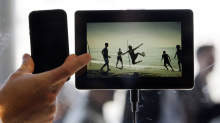 BlackBerry maker Research In Motion, a late entrant in the booming tablet market, will take on Apple’s iPad with competitive pricing of its rival Playbook device. The Canadian firm’s tablet, set to launch in the first quarter of next year, will start contributing to its sales “right at the gate,” said RIM Co-Chief Executive Jim Balsillie. RIM, which has touted the 7-inch tablet’s ability to support Adobe’s widely used Flash multimedia software, is confident the PlayBook would help sustain “fast sales growth.”
BlackBerry maker Research In Motion, a late entrant in the booming tablet market, will take on Apple’s iPad with competitive pricing of its rival Playbook device. The Canadian firm’s tablet, set to launch in the first quarter of next year, will start contributing to its sales “right at the gate,” said RIM Co-Chief Executive Jim Balsillie. RIM, which has touted the 7-inch tablet’s ability to support Adobe’s widely used Flash multimedia software, is confident the PlayBook would help sustain “fast sales growth.” 




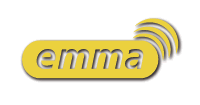





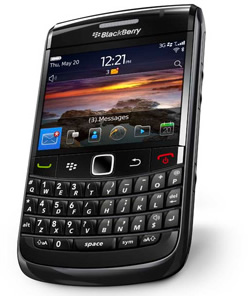 Wireless Communications
Wireless Communications
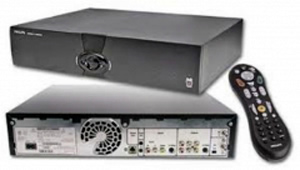 TiVo solved all those problems. It was the logical marriage of computers and video recording. Essentially TiVo was a computer with a hard drive integrated with a TV tuner and MPEG decoder. It digitized and compressed analog video from an antenna, cable or direct broadcast satellite. But it was the software that made the TiVo great. It was reliable. Its user interface was simple. It let users record from the familiar program guide. Since you were recording video to a hard disk, you could appear to pause live TV, instant replay, rewind or record anything.
TiVo solved all those problems. It was the logical marriage of computers and video recording. Essentially TiVo was a computer with a hard drive integrated with a TV tuner and MPEG decoder. It digitized and compressed analog video from an antenna, cable or direct broadcast satellite. But it was the software that made the TiVo great. It was reliable. Its user interface was simple. It let users record from the familiar program guide. Since you were recording video to a hard disk, you could appear to pause live TV, instant replay, rewind or record anything.




